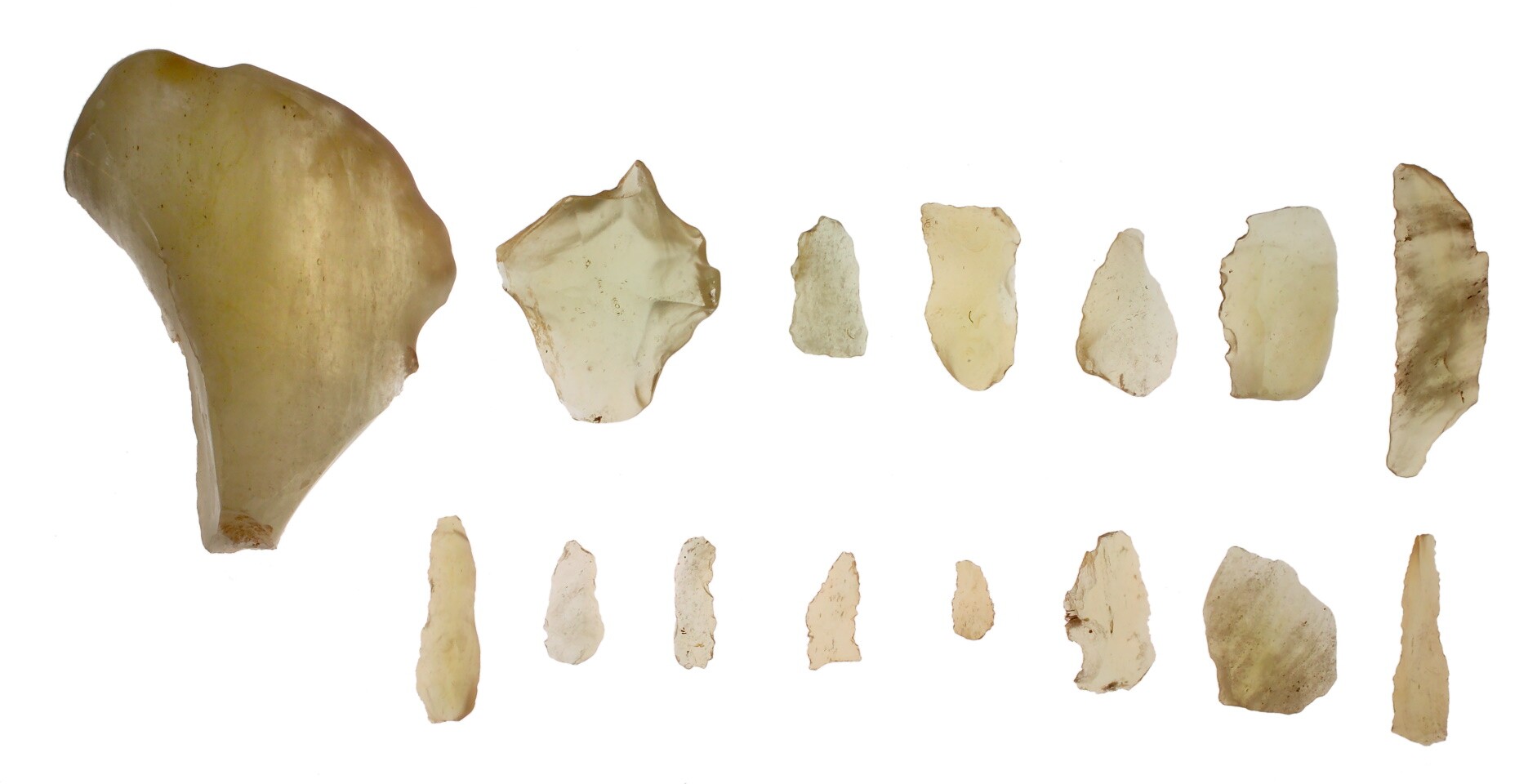Das Besondere an diesen prähistorischen Arbeitsgeräten ist das Material. Es handelt sich dabei um ein natürliches Glas, das ausschließlich westlich des Nils, in dem „Große Sandsee“ genannten Teil der Libyschen Wüste, in einem Areal von ca. 300 qkm vorkommt.
In dieses Gebiet wurde vor einigen Millionen Jahren durch die Hitze und den Druck eines Meteoriteneinschlages zu Glas geschmolzener Sandstein geschleudert. Wegen seiner Schärfe wurde Wüstenglas von den prähistorischen Menschen, die hier zwischen 200.000 v. Chr. bis zum Beginn der pharaonischen Besiedlung der ägyptischen Oasen um 2300 v. Chr. als Nomaden gelebt haben, außerordentlich geschätzt. Als von den Ägyptern verarbeitetes Material ist es erst in jüngster Zeit in den Blickpunkt der Forschung gelangt. (CEL)
en

